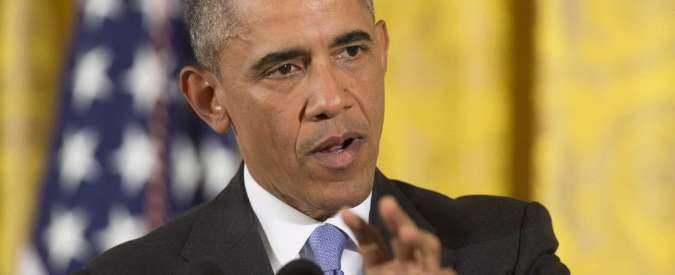
American Pension Funds Are Being Converted into Rubles
The chronic insolvency of these so-called “developed” countries is an obvious fact, which is not denied even by the most ardent Westerners. In answer to the question of how the United States plans to pay its outstanding debt, Westerners simply respond that they will print more dollars, and if anyone tries to protest, the 5th Fleet of the U.S. Navy will come to the brazen creditors’ shores and clarify Washington’s position.
It can be amusing to hear this kind of reasoning coming from the mouths of the defenders of democracy and other liberal freedoms. Quite paradoxically, these defenders are not bothered at all by the fact that the country at the center of their world is behaving like a regular bandit: It borrows large sums of money, and then dismisses those careless enough to ask for their money back.
Even more amusing is the fact that this vicious system of life in debt — when “developed” countries find themselves deeper and deeper in debt every year — seems, to many people, to be eternal and unstoppable. Simple life experience speaks to the fact that attempts to solve financial issues by taking out loan after loan sooner or later will inevitably end in bankruptcy. And the countries in the West don’t have any magical techniques to cheat the basic laws of economics. Sooner or later, they will be forced to put their paws up and admit they are insolvent.
The dollar, by the way, has been falling in price recently. This comes against the backdrop of the hesitant U.S. Federal Reserve, which has long promised to raise the interest rate, yet still has not decided to do so.
In recent days, the dollar index has been on the brink of death.
This is a bad sign for American currency. From this, we can assume that after the shift to a Negative Interest Rate Policy — the last hope for America’s economy, as I’ve written previously — the decline of the dollar will accelerate.
Nothing in the modern financial world is as helpless, irresponsible and depraved as the central banks that employ NIRP. Yet it is already clear that sooner or later, the Fed will employ NIRP as well.
By philistine standards, events are not unfolding all that quickly; it is unlikely that we will see negative interest rates in the U.S. earlier than the start of 2016. It’s possible that in this year, there will be a chance to escape just like the Hryvnia did — a currency which, as Valeriya Gontareva, head of the National Bank of Ukraine, said, the National Bank of Ukraine no longer plans to keep afloat.
Nevertheless, the gigantic dollar pyramid is already covered with cracks, and has begun to creak ominously under the strain.
American pension funds are in a particularly sorry state, as the Fed’s near-zero rates have shaved away its revenues almost to the roots. Funds cannot invest in domestic U.S. securities no matter how robust they are, and since they make no income from bond interest, they are unable to pay pensions.
The state of Illinois has already announced that it will not be able to make $650 million worth of pension payments. There is no money in the state budget, and even in the best of circumstances, they will not be able to pay off their debts until June 2016 at the earliest.
However, as you recall, American pensioners are thus far unable to sit around for half a year without their pensions — they need to pay for things now. And pension funds, which lost the ability to live off the interest of their own capital, are forced to take on the deficit of more and more loans.
If this were happening in Russia — where the pension system is also far from ideal, as is the case in many countries, by the way — pension fund problems would simply be solved with the budget. But this won’t work for the United States. As it is, there is no money in the American budget, and it is clear that the U.S. economy could not withstand higher taxes.
Judging by the fact that despite its attempts, the Fed still has not decided to raise the interest rate by even a quarter of a percent, it is clear that the screws have been tightened to the limit. Increasing the tax burden even by just a few percentage points will be the last straw that will break the real economy’s back.
Given this situation, what is to be done about pension funds?
The largest pension fund in the U.S., CalPERS, is planning to invest in the ruble. Currently, the American fund already has about $250 million worth of Russian federal loan bonds in its portfolio, and the fund is now attempting to increase its investment in ruble bonds.
If this trend continues, CalPERS could strengthen its position in Russian securities, said Rosborough.* The fund placed a bid to acquire inflation bonds at an auction on Wednesday, but did not receive them because its bid was above the cut-off price. The Russian Ministry of Finance sold the entire volume of inflation bonds that were up for auction for a total of 20.2 million rubles — almost five times the original offer price.
These new Russian treasury bonds currently earn interest at 7.5 percent per year in rubles, and moreover, they are secured against inflation.
This presents an interesting proposition for American pension funds, which are in dire need of money and which cannot rely on analogous U.S. securities to earn an income that would even cover U.S. inflation.
Editor’s Note: Although accurately translated, the source of this statement could not be independently verified. Rosborough is believed to refer to Lauren Rosborough, a senior currency strategist in Australia.

